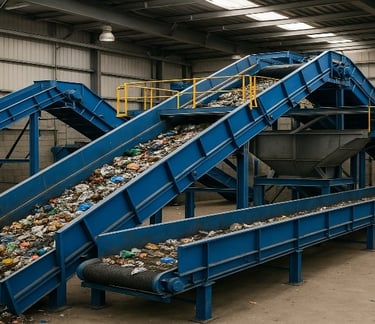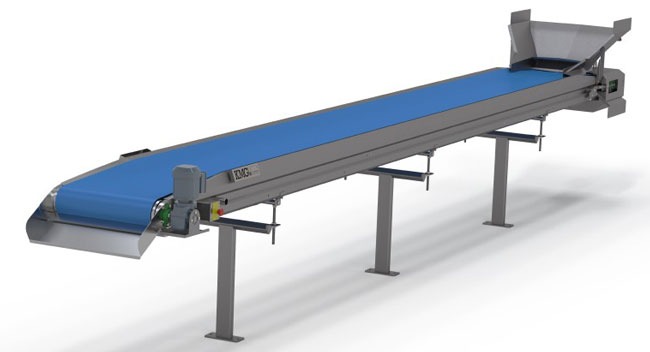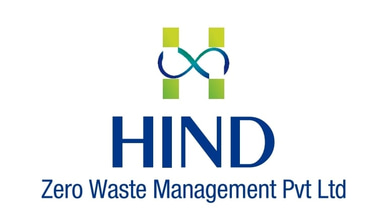Conveyor & Conveying System
Discover a diverse range of high-quality products tailored to meet your needs and preferences.
A Conveyor & Conveying System is a critical component in modern waste management facilities, designed to transport, sort, and handle waste materials efficiently and safely. These systems are engineered to automate the movement of solid waste, recyclable materials, and industrial refuse across various processing stations, reducing manual labor and improving operational efficiency.
🌍 What is a Conveyor System in Waste Management?
A conveyor system is a mechanized transport solution that moves waste along a predefined path using belts, rollers, chains, or slats. In waste management, these systems are used in municipal solid waste (MSW) plants, material recovery facilities (MRFs), biomining operations, and recycling units to streamline sorting, shredding, composting, and baling processes.


★★★★★
Conveyor & Conveying System
🔄 Types of Conveying Systems Used in Waste Management:
Belt Conveyors: Ideal for transporting bulk materials over long distances.
Screw Conveyors: Used for compact waste or sludge in confined spaces.
Chain Conveyors: Suitable for heavy, abrasive, or large-sized waste.
Roller Conveyors: Common in sorting lines for easy handling and manual segregation.
🛠️ How Does a Waste Conveyor System Work?
The working of a conveyor system in waste management involves the following steps:
Waste Loading: Waste is dumped onto the feeder conveyor through manual or automated loading equipment like grabbers or hoppers.
Transportation: A belt conveyor or chain conveyor transports the waste to different processing zones (e.g., shredder, separator, trommel, or baler).
Sorting & Separation: While on the conveyor, manual pickers or automated systems (such as optical sorters and magnets) separate recyclable or valuable materials from inert or non-recyclable waste.
Processing or Disposal: After sorting, the waste is directed to specific machines for further treatment (e.g., incineration, composting, or compacting).
Return Conveyor (Optional): In closed-loop systems, residual waste is transported back to a specific section for reprocessing or re-sorting.
✅ Key Benefits of Using Conveyor Systems in Waste Management:
Improved Efficiency: Streamlines waste processing with continuous, automated movement.
Reduced Labor Costs: Minimizes manual handling and increases worker safety.
Scalability: Easily integrated with shredders, separators, and compactors.
Customizable Design: Tailored to specific waste types and facility layouts.
Sustainable Operation: Promotes recycling and effective material recovery


Ideal For
Municipal Solid Waste (MSW) Handling
Recycling Facilities
Legacy Waste Biomining
Construction & Demolition (C&D) Waste Processing
Composting Plants
Hazardous Waste Sorting


